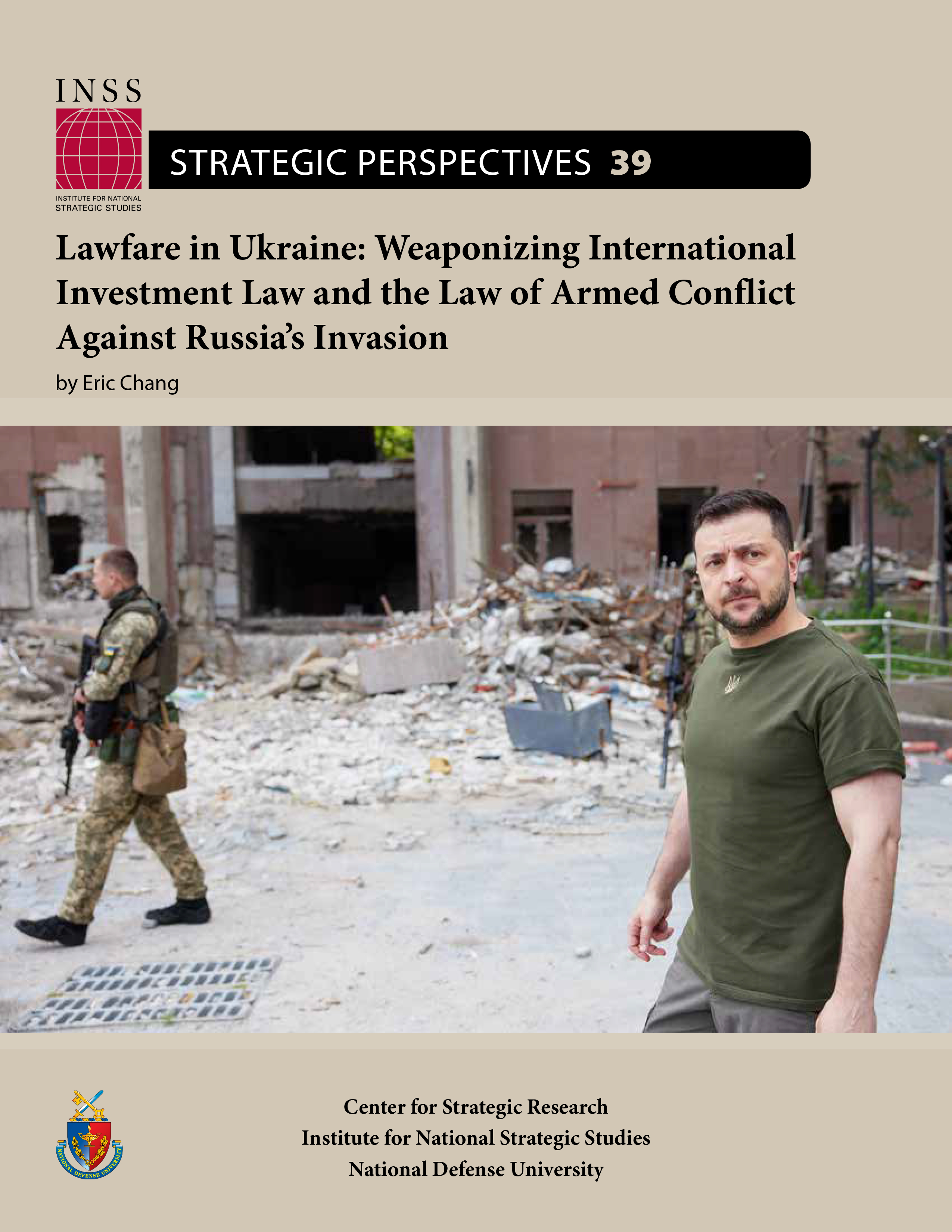Download PDF
Executive Summary

This paper explores Ukraine’s innovative use of international investment law to hold Russia financially liable for damages arising out of its 2014 invasion and occupation of Crimea, and how this use of “lawfare” strategy can be further leveraged considering Russia’s renewed military invasion of Ukraine in 2022.
Following Russia’s initial 2014 invasion of the Crimean Peninsula, Ukraine decided not to use its military forces to directly confront Russian forces. Instead, Ukraine opted for a deliberate and systematic use of lawfare, broadly defined as the use of the law as a substitute for traditional military means to achieve an operational objective. Ukraine focused on a particular area of law—international investment law—as a legal means to “wage war” against Russia. Ukraine’s lawfare response to Russia’s incursion presents a unique and instructive case study of a belligerent State’s systematic use of legal means—including the leveraging of the law of armed conflict (LOAC)—as a weapon in an ongoing international armed conflict in the Great Power competition (GPC) context.
International investment law is a specialized subset of public international law, and its defining feature is a unique dispute resolution forum known as investor-State dispute settlement (ISDS), which has allowed private Ukrainian investors to file international arbitration claims directly against Russia for damages arising out of Russia’s 2014 invasion and subsequent occupation of Crimea. These claims allege Russia’s breach of treaty protections to Ukrainian investments in various industry sectors. The initial arbitration awards have uniformly found Russia liable, issuing damages collectively worth billions of U.S. dollars (USD). These awards are accruing compounding legal interest, which will increase indefinitely until paid, settled, or until Russia withdraws from Crimea. Of equal significance, these investment claims have creatively leveraged LOAC principles to allow the Ukrainian investors to avail themselves of the ISDS forum and, ultimately, accomplish Ukraine’s lawfare objectives.
The impact of the investment claims is incontestable: as Russia itself has implicitly admitted, the awards are exacting a very real financial toll. Just as importantly, there is a normative value in the awards’ implicit criticism of Russia’s occupation, and in the very fact that Ukraine is countering an aggressive military action through a peaceful mode of dispute resolution. Ukraine has astutely integrated these points into its strategic communications efforts.
Russia’s ongoing efforts to invade and occupy the remainder of Ukraine opens the way for additional investment claims, leading to further potential financial exposure orders of magnitude greater than that already incurred in Crimea. Given the very wide range of possible investment claim scenarios, these claims can effectively be seen as a backdoor mechanism for war reparations. Investment awards will materially augment other sanctions imposed by the United States and its allies, adding to Russia’s overall financial and economic punishment.
The United States should learn from and support Ukraine’s lawfare strategy. As a narrow goal, the United States should engage in opportunistic lawfare engagements against Russia wherever possible. This could include U.S. Treasury assistance to make sanctioned Russian assets available for enforcement by Ukrainian investors. The perceived legitimacy of seizing ill-gotten gains from kleptocratic oligarchs and Russia’s Central Bank and distributing these to Ukrainian investors could provide the political support needed to pass such aggressive sanctions and convince U.S. allies to do the same.
Finally, Ukraine’s successful lawfare strategy highlights the lack of a similar unified national strategy in the United States. There is a mounting argument for the United States to adopt such an approach, incorporating law and lawfare into a whole-of-government approach that already leverages other instruments of national power.1
Read More
Notes
1 An early version of this article appeared in the Lawfire blog, published by Duke Law School’s Center on Law, Ethics and National Security, and edited by Major General Charles J. Dunlap, Jr., USAF (Ret.); see Eric Chang, “Ukraine’s Lawfare Strategy May Help in Deterring Further Russian Plans for Invasion,” Lawfire blog, December 21, 2021, available at <https://sites.duke.edu/lawfire/2021/12/21/ guest-post-eric-chang-on-ukraines-lawfare-strategy-may-help-in-deterring-further-russian-plans-forinvasion>.